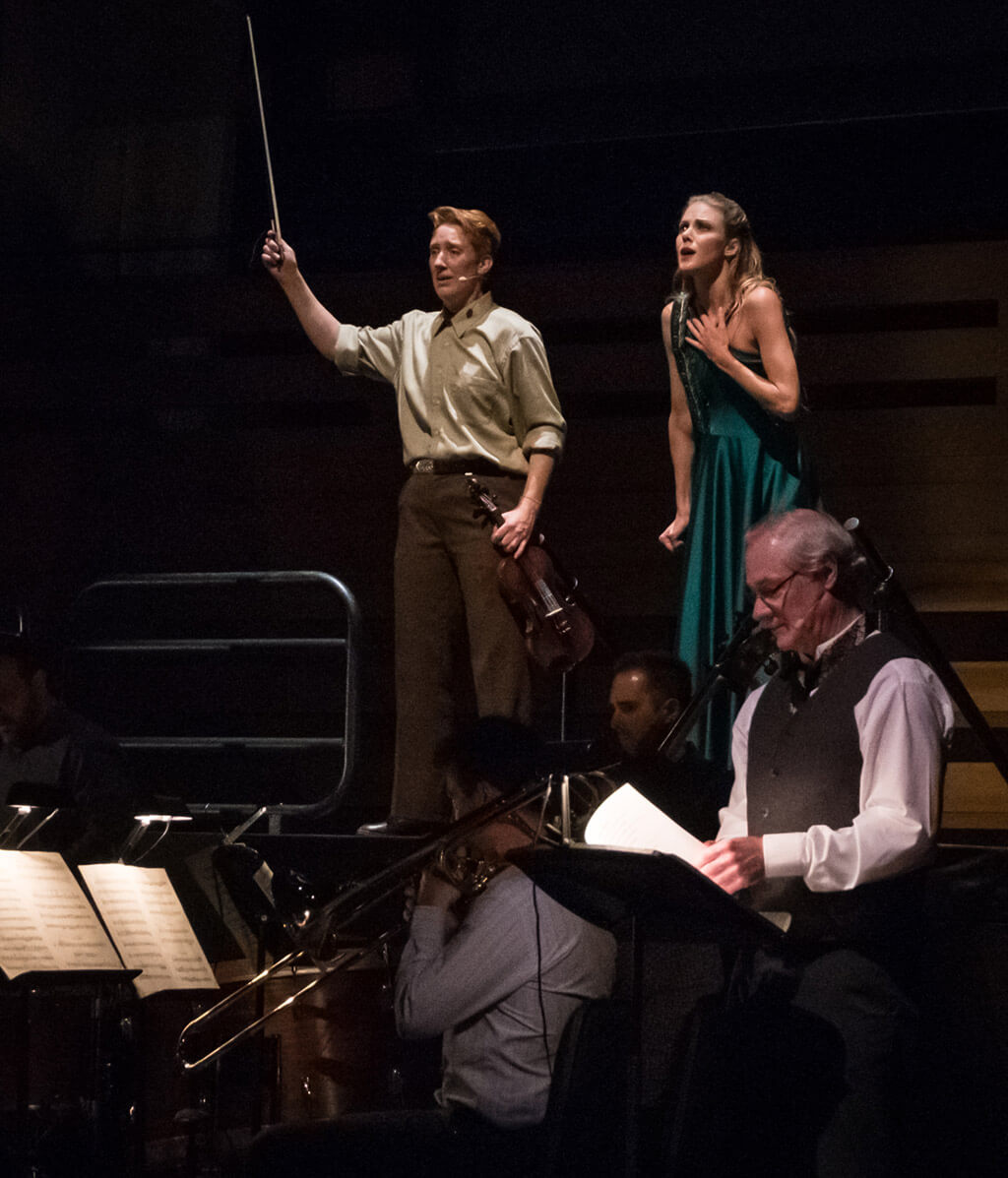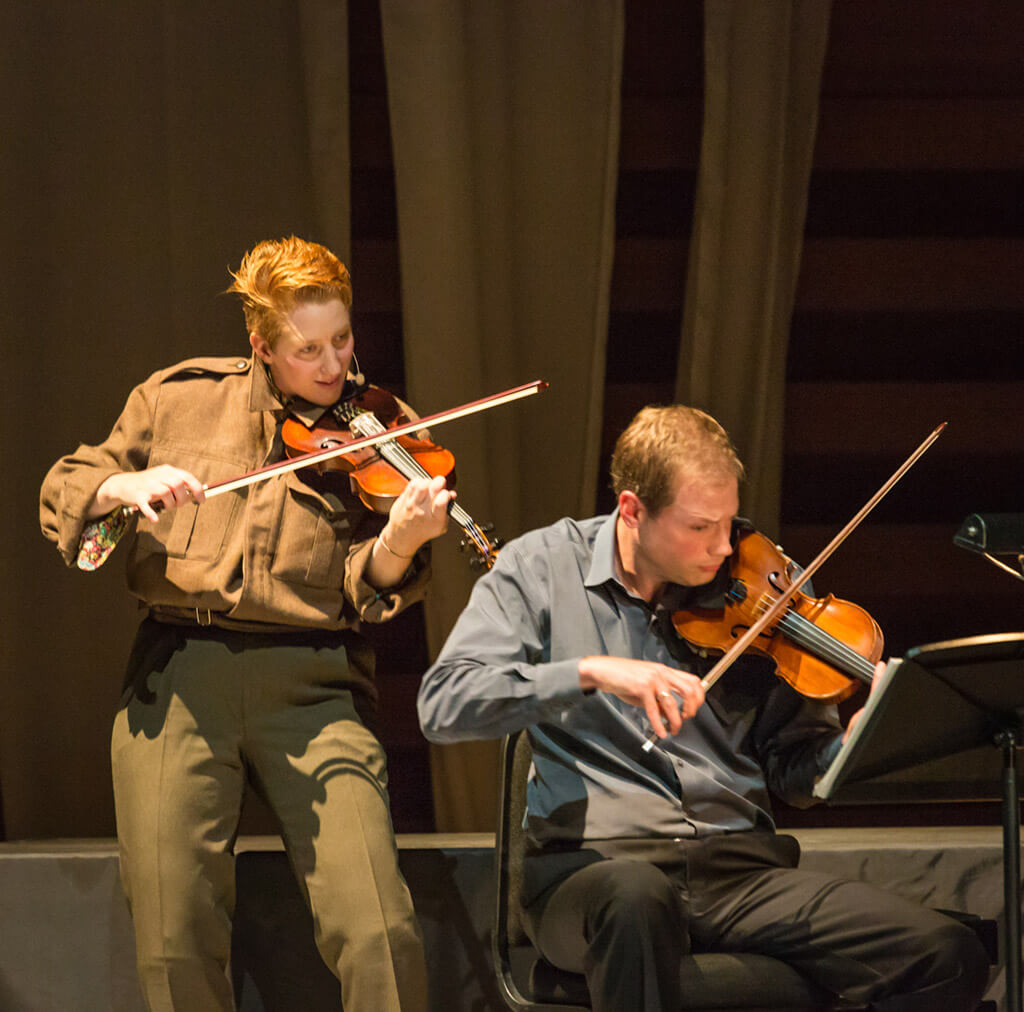
L’Histoire du Soldat & Appalachian Spring. Toronto Summer Music Festival. Koerner Hall. July 19.
Concert programs that don’t make sense often signal that the evening is going to be a bust on some level. But sometimes an improbable program turns out to be a satisfying and memorable experience.
The latter came true on Thursday night at Koerner Hall, where the Toronto Summer Music Festival presented a double bill: Aaron Copland’s 1944 ballet suite Appalachian Spring, followed by the rough-hewn musical theatre of Igor Stravinsky’s L’Histoire du Soldat (The Soldier’s Tale) from 1918.
Toronto Summer Music Festival artistic director Jonathan Crow led chamber-sized musical forces on stage from his violin chair. In L’Histoire du Soldat, the musicians were joined by actor Derek Boyes, dancer Jennifer Nichols and actor Suzanne Roberts Smith in a compelling, contemporized telling of the story of a soldier who trades her fiddle (and her happiness) for the key to worldly riches.
The aesthetic behind each piece is completely different. And yet, in this difference, we can see a common thread: the virtue of being satisfied with what you have. Copland expresses this state when he quotes the Shaker hymn “Simple Gifts.” Stravinsky’s librettist C.F. Ramuz expresses it when the narrator exclaims, “You can’t have it all.”
Both composers were speaking to wrenching times, and the underlying message of asking about the keys to personal contentment is no less relevant today.
The evening was a demonstration on how it doesn’t take gigantic musical forces to make a strong impact on an audience: Crow was one of 13 instrumentalists on stage for the Copland – the size of orchestra the composer had in mind when he first wrote Appalachian Spring; and Stravinsky’s score asks for only seven players.
Having the bare minimum of instruments meant that, in the generous acoustics at Koerner Hall, it was possible to appreciate each player as well as the clever and very different ways in which each composer enriched the colour and texture of their music by the choice of instrument pairings.
The playing from both ensembles was remarkable for its precision, balance and clarity. For the Stravinsky, the players were all friends of Crowe’s from the Toronto Symphony Orchestra. In the Copland, members of the TSO were joined by fellows of the Festival’s academy, which runs alongside the public events.

The tone-poetry of Appalachian Spring — the second word in the title, hastily plucked by Copland from a poem by Hart Crane, is about a water source in the Adirondack Mountains — came across with particular lustre. Even though the overall approach to the music was delicate, it never lost its thematic purpose or rhythmic drive.
Stravinsky’s score, as spiky as his great ballets that had come immediately before, pulsed with brittle energy. The performances were compelling. Smith was charismatic as the soldier, Boyes deftly switched between characters with changes of voice tone and accent, and Nichols’ light-bodied dancing was riveting. Kudos to stage director Alaina Viau for piecing it together seamlessly and with a good dose of humour.
(In a fleeting moment, we witnessed what was probably the most tasteful yet fully evocative depiction of oral sex I’ve ever seen.)
Pairing a rural idyll with a Modernist fable may not be an obvious choice, but it made the world feel like a bigger, broader place as the performances unfolded in front of our eyes and ears. It’s too bad there couldn’t be multiple performances so that more people could experience this magical side of musical theatre.
- Classical Music 101: What Does A Conductor Do? - June 17, 2019
- Classical Music 101 | What Does Period Instrument Mean? - May 6, 2019
- CLASSICAL MUSIC 101 | What Does It Mean To Be In Tune? - April 23, 2019



